Artificial intelligence (AI) is one of the most important data science trends. Yet there is still a very broad spectrum of interpretations of what is really meant by the term. On the one hand, everyone is talking about artificial intelligence. On the other hand, according to a recent Study by PWC only 6 % of the companies AI. This finding is surprising for two reasons. For one, even the respondents to the study are aware of the benefits of AI. Secondly, the spectrum of possible applications for artificial intelligence is enormous.
Inhaltsverzeichnis
Definition of Artificial Intelligence
First of all, artificial intelligence is a collective term under which a number of subfields of computer science and mathematics are subsumed. The goal of the methods explored in it is, solve complex tasks. These are often problems that could previously only be solved with the help of human cognition.
The best-known methods in this field include: Machine Learning, Deep Learning, neural networks and Natural Language Processing (NLP). In addition, there are numerous other methods in each of these fields of research. One of the challenges in practice is therefore to correctly grasp the problem and identify a suitable method to solve it. To put it simply, the basic question in the development of artificial intelligence was: Can computers imitate the human brain? Numerous AI-based methods therefore map the functioning of the human brain. The human nerve cell acted as a kind of blueprint for artificial neurons.
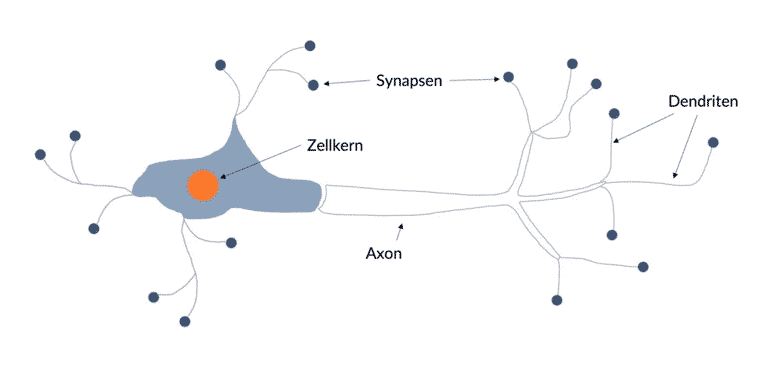
This simple structure of input, signal processing and output can be found as a basic principle in almost all current AI methods. However, this experimental set-up only provides Meaningful results when trained appropriately. This involves learning rules that determine how the incoming signal should be processed.
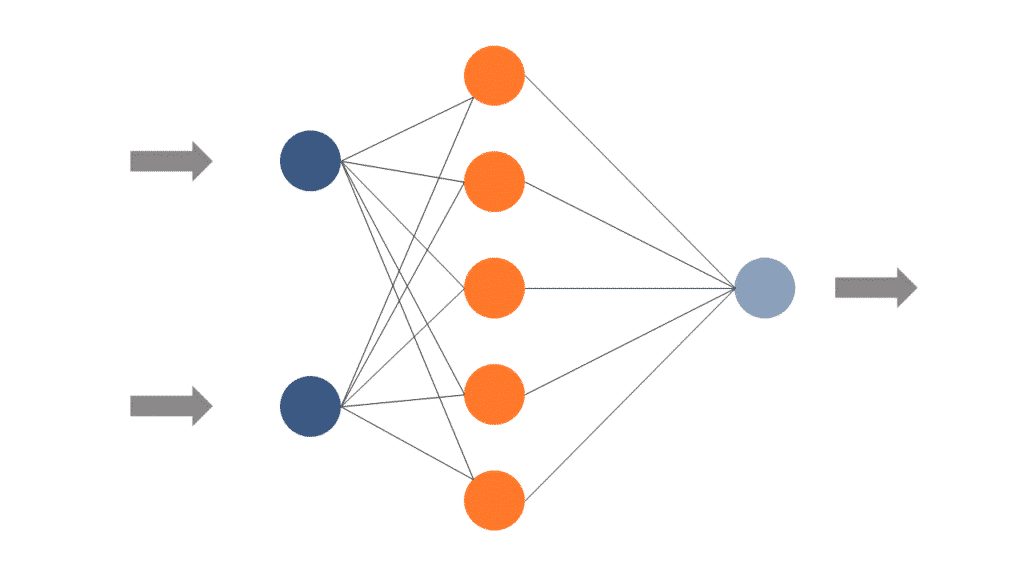
For a better understanding, let us take the Example image recognition. In this case, an artificial intelligence is to be trained to recognise faces in pictures. To do this, a suitable method must be found with which to train a neural network. Each of the hidden layers examines characteristic features that distinguish meaning, to recognise faces in the image data. During the learning process, every single point in the network is given a certain weighting.
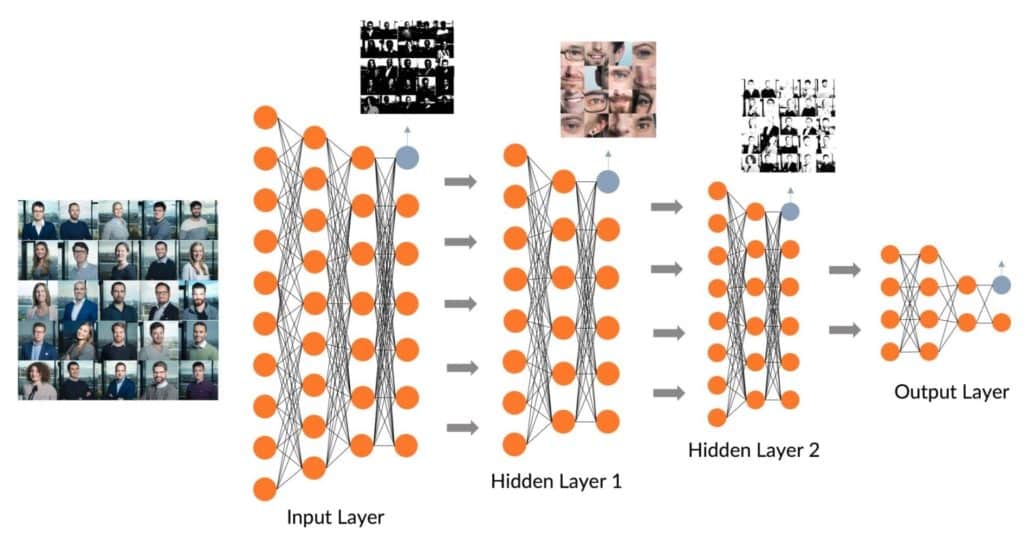
The basis
The central The basis for all AI applications is a sufficient amount of data. In addition, they must have a corresponding Data quality have. This data is necessary because the AI systems must be trained for their use in practice. Only then can they fulfil their task.
This is illustrated by the example of procedures for Image recognition clearly. An artificial intelligence first learns to recognise certain elements in the images on the basis of millions of image data. Only after this learning process can this system recognise this element in unknown images. These can be dogs, cats or human faces.
Probably one of the best known examples of this is the "Muffin Chihuahua Example". Even for humans, it is sometimes difficult to distinguish at first glance whether it is a muffin or a Chihuahua.

Basically, one distinguishes between two types of AI, weak and strong AI.
Weak AI - Today long a reality
Weak AI is the term used to describe all those applications of artificial intelligence that are based on limited to a single task is. All forms of AI that exist today fall into the realm of weak AI. Contrary to the frequent assumption, humans are not the benchmark here. Even today, the capabilities of weak AI exceed the performance of humans in accomplishing the same task.
Strong AI - A vision of the future
We speak of strong AI when an artificial intelligence is able to control the Human intelligence exceeds in all areas. Especially when we are about to talk about the dangers of artificial intelligence, we are usually referring to strong AI. This is characterised by a certain property. It would be able to perform not only one task better than humans, but any number of them. Because of this ability, this form of artificial intelligence is also known as a "powerful AI". Artificial General Intelligence called.
However, the question of when and whether a strong AI will ever be developed has not yet been clarified. Although there have been the first promising attempts in connection with Reinforcement Learning have been achieved. In addition to technological development, however, legal framework conditions still need to be created above all. This also includes a social debate on questions of applicability and ethics. There is also fundamental disagreement about whether strong AI has consciousness, empathy or emotional intelligence. However, the success of the vision of the future associated with strong AI stands and falls not only with its capabilities. The trust that people have in it is at least as important.
The dangers of artificial intelligence
The topic of AI is polarising. Warnings and fear have always accompanied the development of artificial intelligence. A distinction can be made between unfounded alarmism and real dangers. For example, there is no evidence so far that AI will lead to mass unemployment. At the moment, the opposite seems to be the case. What is true is that artificial intelligence is a has great potential to change the world of work.
There are numerous irrational fears when it comes to the future development of powerful AI. These include the belief that intelligent machines could develop a consciousness and turn on humans. against humans. From today's perspective, all these scenarios can be countered with one main one argument against all these scenarios. Namely, that very few researchers are even are even concerned with the development of a strong AI.
A real danger, however, is that Decision-making processes are too much based on the analyses of algorithms. This becomes a problem especially when there is a lack of in-depth understanding of data analysis. The assumption that programmes exceed one's own abilities is therefore a danger. Because it eliminates one's own ability to judge and transfers responsibility to the machine.
Advantages and disadvantages of AI
Since this debate about the dangers of AI only divides the participants into two camps, it should be objectified. Therefore, the advantages and disadvantages of AI should be listed here. On the one hand, this makes it clear how companies can benefit from the use of AI. On the other hand, fields of action are shown where risks exist.
The advantages
- Optimisation of processes and increase in efficiency through
- Saving costs through automation and partial automation of routine tasks
- Improving protection against cyber-attacks and hacker attacks
- Laying the foundations for data-driven business models
- Improving the customer journey through personalisation
- Increasing the quality of data analyses
- Increasing safety when using robots or autonomous vehicles
- Promoting knowledge from data
In addition to these advantages, which are deliberately kept rather general, numerous concrete advantages could be named that result from individual applications. For example Diagnosing diseases better through artificial intelligence, significantly shorten the development time of medicines or, in the case of autonomous driving, reduce the number of accidents.
Realistic chances
When it comes to artificial intelligence, a reaction pattern repeats itself that can also be seen in other phenomena such as Big Data or social bots showed. New technologies can be used for good and for bad. That's why it's important to look at the real dangers and the possibilities.
It is therefore important for companies to work with data science applications, Chatbots or Big Data to collect positive experiences. Only then can they give their employees a realistic picture of the opportunities involved.
Employees need to be supported through workshops and Data Science Trainings with the equipped with the appropriate knowledget to deal productively with the new technologies. A proactive approach is worthwhile simply because of the competitive situation. Those who bring competences into the company early on and have a willingness and a positive attitude with its employees, will be the most benefit from the advantagesthat artificial intelligence brings with it.
The disadvantages and risks
- Decision-making processes are partly not understood
- New risks related to data protection and data security
- Unrealistic expectations of AI-based applications
- Responsibilities for newly emerging areas often unclear (data governance)
- Unresolved issues regarding liability and ethics
- Blurring the line between truth and fake (deepfake)
The last point in particular shows that the risks and disadvantages of AI create pressure to act. The creation of legal framework conditions and education about the new possibilities are essential. Because this is also part of artificial intelligence: the deceptively real manipulation of data as in the following video.
Organisations must prepare themselves for the use of artificial intelligence. This can be achieved by Staff members are trained and an understanding of how they can use data and artificial intelligence profitably.
Artificial intelligence in everyday life
AI is causing numerous advances in research, such as in medicine or in the context of Industry 4.0, but has also long been found in numerous areas of everyday life. Without always being aware of it, users often benefit from the advantages of AI-based algorithms. For example, recommender systems use artificial intelligence to recommend content on an individualised basis. The principle of "If you liked A, you'll like B" can now be found on numerous platforms. Be it with Product recommendations in web shops or with content providers such as Netflix or Spotify.
The reason why the quality of personalised recommendations has continuously increased in recent years is artificial intelligence. While older recommendation services still managed without Artificial Intelligence, significant improvement could be achieved with the new analysis methods.
Many chatbots and voice assistants also understand and imitate the natural language of humans thanks to methods such as NLP. Google showed this at the latest with the demonstration of the Google Assistant impressively at the I/O developer conference in 2018. The Google Assistant made a phone call to a restaurant in a completely natural way to coordinate an appointment.
Also the capabilities of other voice assistants such as Amazon's Alexa grow year after year thanks to artificial intelligence. Another example is offered by the Automotive industrywhich is facing a major transformation triggered by AI. Starting with development, through networked production to operation and maintenance. The latter is particularly evident in new maintenance approaches such as Predictive Maintenance.
Processes that can be improved and optimised through the use of artificial intelligence can be found everywhere. And last but not least autonomous driving vehicles an important example of the future use of AI in everyday life.
Artificial intelligence in the economy
Artificial intelligence and its impact in the economy is often discussed in the context of fears that technological progress will result in Jobs are lost. But often the ideas about what artificial intelligence actually is are diffuse and sometimes even wrong.
Due to the misunderstandings and associated uncertainties mentioned at the beginning of this article, companies that are considering the use of artificial intelligence should educate themselves at an early stage. Often Fears are unfounded and, on the contrary, hinder the introduction of the of new, innovative projects.
If you want to successfully apply artificial intelligence in your company, you have to take your employees with you. Fears and inhibitions have to be reduced and the actual benefit and purpose explained and made aware.
Why the fear of artificial intelligence is unfounded
Artificial intelligence can be defined in a very abbreviated way as a capability, to digitally map cognitive processes and make them usable. A notion that is misleading at the moment very quickly associates artificial intelligence with human-like machines.
The idea that intelligent machines are superior to humans and will soon be able to replace them is often Hollywood films inspired. There are numerous examples there in which machines with artificial intelligence are hostile to humans. Films like Terminator, Matrix or Ex Machina consciously or unconsciously shape our expectations of artificial intelligence. At the same time, this makes it difficult to take a realistic view of the subject.
The (unfounded) fear of deserted factories and autonomously working machines
Especially in industrial manufacturing companies, there is this fear that all jobs there will be replaced by intelligent machines in the future. This overlooks the fact that artificial intelligence does not simply increase the degree of automation. Rather, it is the case that the Production as a whole Transforms becomes and fundamentally changes.
Artificial intelligence heralds the end of the era of automated mass production. In the Smart Factory new forms of production are possible, such as the "Lot-Size-One-Production" or "Batch size 1 production". The term refers to the industrial production of individual pieces.
Today, with this development, we are experiencing the transition into the Age of flexible specialisation. Taking individual customer wishes into account is possible today due to the high level of technology in production at the level of mass production. In other words: instead of producing thousands of workpieces of the same type, it is possible to in individual customer wishes are taken into account for each individual order.
People in factories scenarios such as these will definitely still needed. And for one particular reason more than ever: it is only through the achievements in the field of artificial intelligence that it is possible for there to be more intensive Human-machine cooperation comes. Previous developments in the field of automation tended to exclude humans due to their limited possibilities.
Conclusion and outlook
In recent years, well-known methods such as machine learning have experienced a renaissance. Although these have been developed theoretically since the 1970s, developments in computing power and memory technology were ultimately decisive. Technological developments such as quantum computing remain exciting. However, it would be much more important to actually use the potential of AI that already exists today. For this, awareness must be raised as to the cases in which the use of artificial intelligence is actually worthwhile. There are a whole range of reasons why companies have so far hardly succeeded in generating added value from their data. Many of these obstacles can easily be removed to create the basis for the use of AI. But one thing is already clear today: it is impossible to imagine life without artificial intelligence.



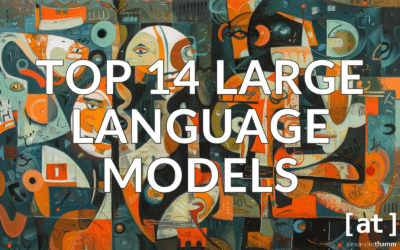
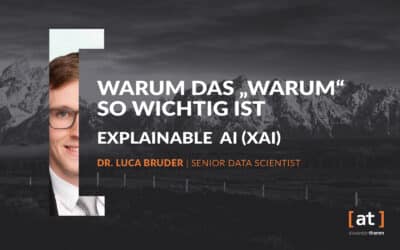
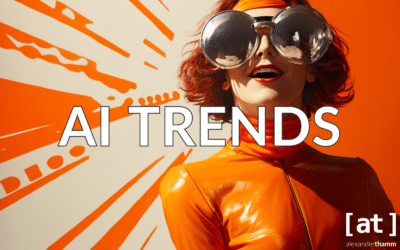





0 Kommentare